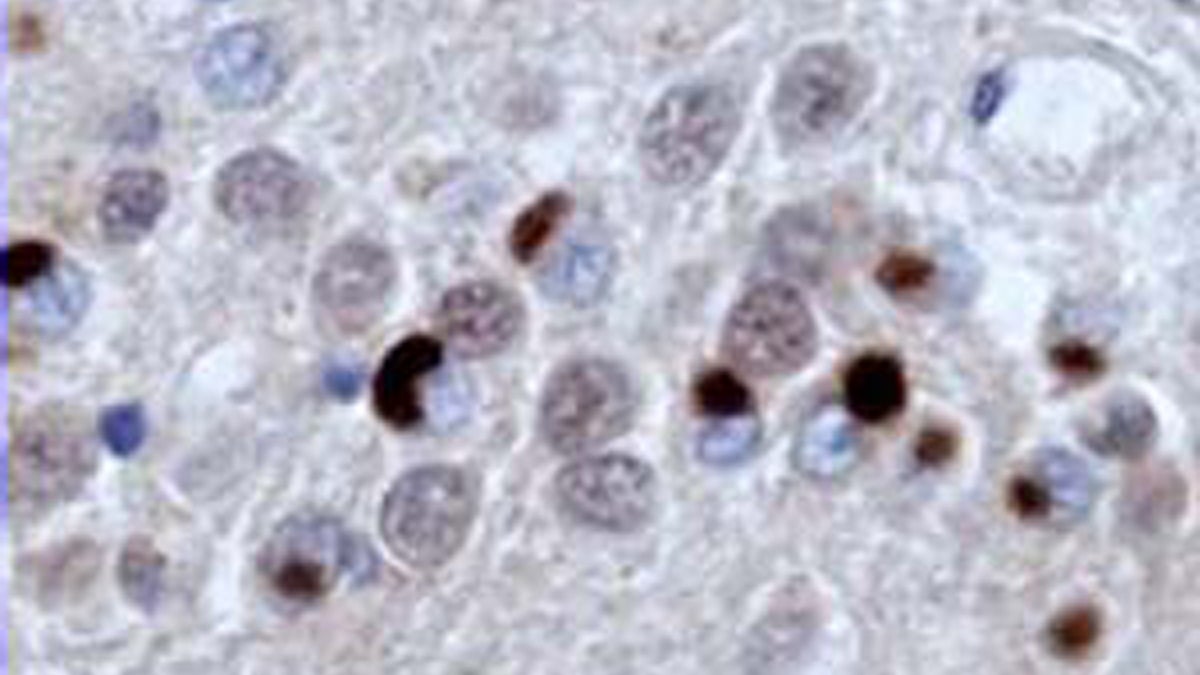Re-engineered yeast protein holds promise for fighting Parkinson’s, ALS

Misfolded disease proteins (deep red) in the brain of someone with frontotemporal dementia (FTD). It is also seen in patients with amyotrophic lateral sclerosis (ALS, also known as Lou Gehrig’s disease). Certain forms of FTD, ALS and possibly other neurological diseases may involve this misfolded protein.(Image courtesy of National Institutes of Health/nih.gov)
Right now, there’s not much that can be done about the toxic clumps of proteins that accumulate in the brains of people with neurodegenerative diseases such as Parkinson’s disease and amyotrophic lateral sclerosis (ALS), also known as Lou Gehrig’s disease. But researchers at the University of Pennsylvania have been tinkering with a yeast protein that may change that one day.
The current star in James Shorter’s lab is a chaperone protein known as Heat Shock Protein 104 (Hsp104). It helps yeast recover from severe environmental stresses. But for scientists like Meredith Jackrel, a postdoctoral fellow in the lab, the real draw is its ability to unfold proteins that begin to clump up and can cause problems in cells.
“It’s really one of the only proteins that’s known to be able to do this,” said Jackrel, who is the lead author on the latest study. “But humans don’t have this protein, so our goal was to take it from yeast and re-engineer it to be able to recognize different types of proteins that clump up and form aggregates in diseases like ALS and Parkinson’s disease, and then hopefully, eventually, use it as a therapeutic to treat these disorders.”
Published this month in the journal Cell, Jackrel and colleagues made a series of random mutations in Hsp104 and happened upon several versions that work even better. The effect they had on the vexing protein clumps was striking.
“We were able to see that these proteins not just are unfolded, but they also seem to return to their normal function and reverse neurodegeneration in a worm model,” said Jackrel.
In the worm model of Parkinson’s, just 10 percent of the worms kept full neurological function after 10 days. That percentage jumped to 20 to 30 percent for worms with Jackrel’s protein.
The next step for the Shorter lab is to test their modified Hsp104 in rodents in hopes of eventually helping ALS or Parkinson’s patients through gene therapy or direct injection of the protein.
WHYY is your source for fact-based, in-depth journalism and information. As a nonprofit organization, we rely on financial support from readers like you. Please give today.

